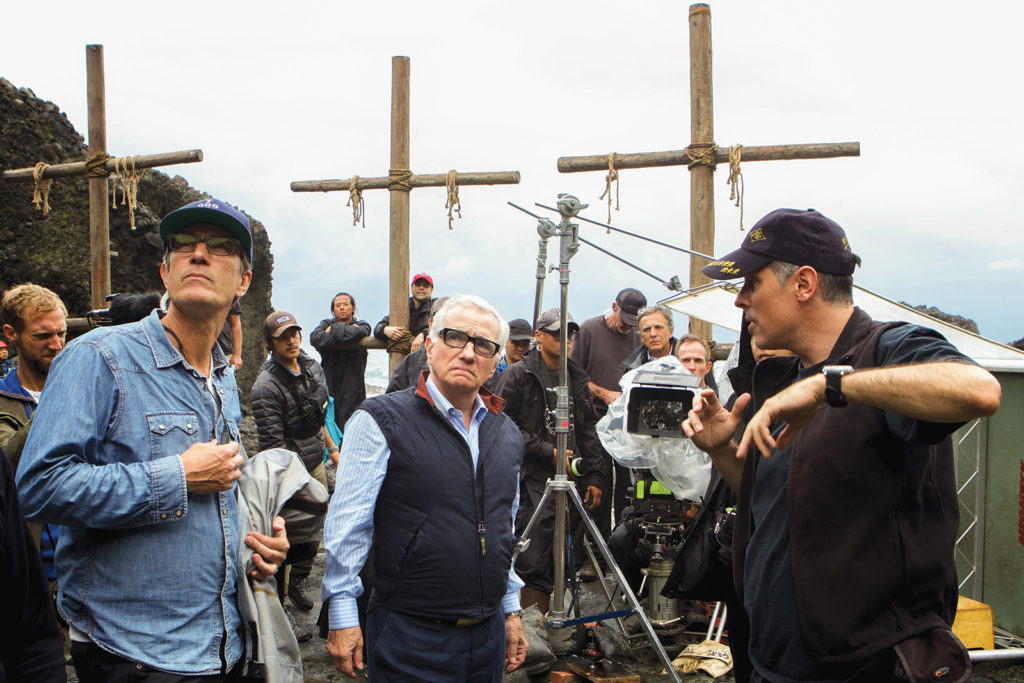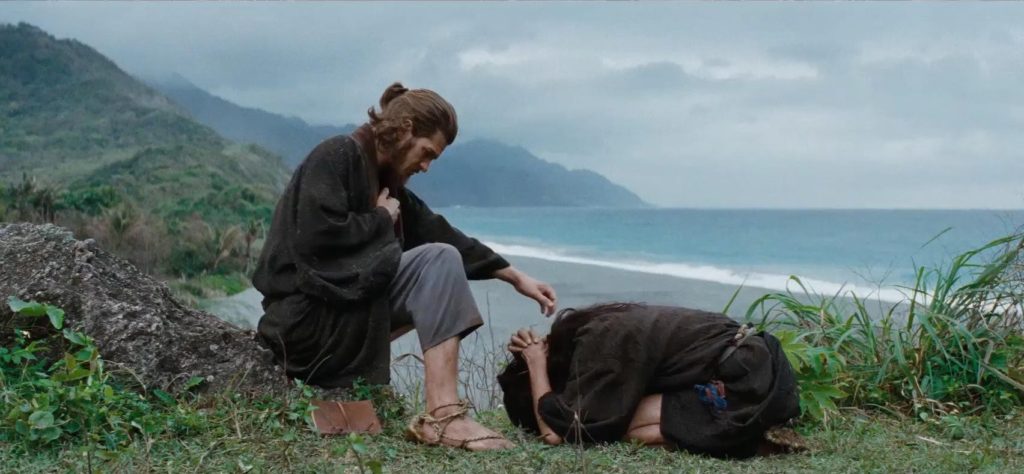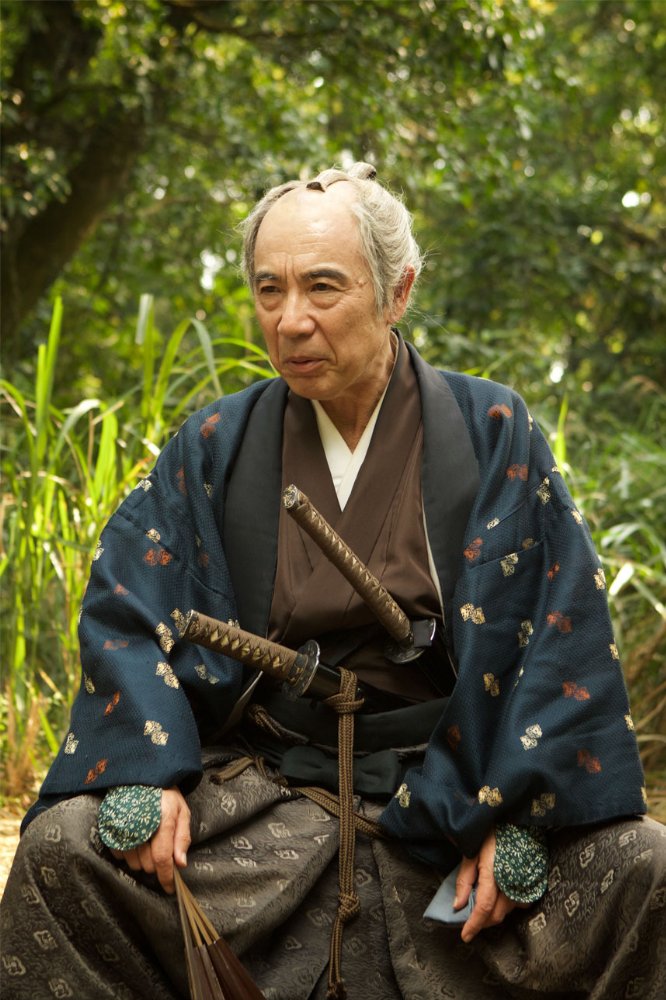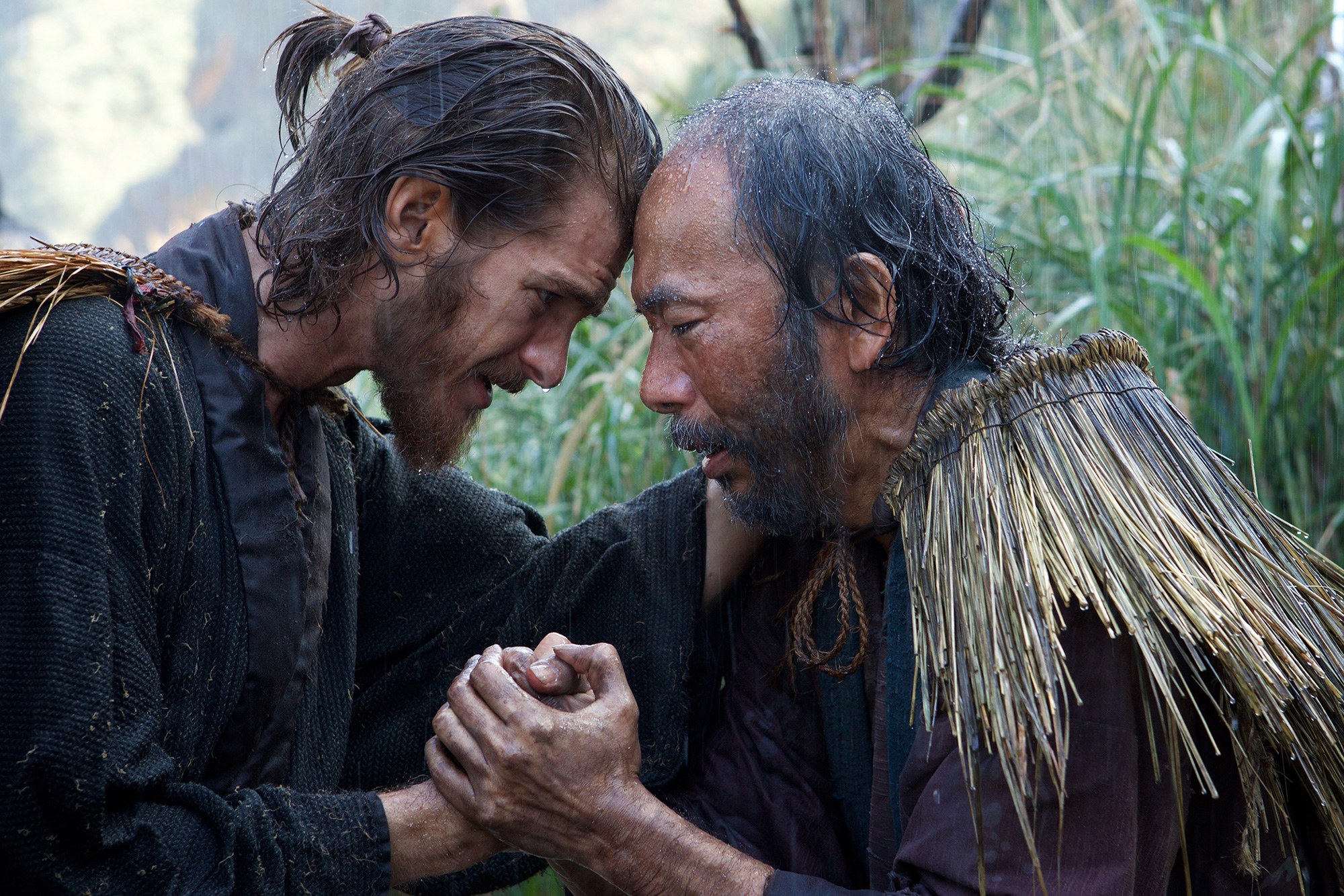While listening to a recent episode of the “Makers and Mystics” podcast (one of my new favorites, actually; I’ll link it here), I was introduced to the work of Japanese artist Makoto Fujimura. Since my teenage years, like many of my generation, I have been enamored with certain affectations of Japanese culture. From the interactive entertainment work of Hideo Kojima, to the films of Studio Ghibli, to the general admiration that comes from the high style of the Samurai and feudal Japanese eras. But during this episode, Fujimura brought to my attention Shusaku Endo’s novel “Silence” and the resulting film of the same name.
To the uninitiated, Japanese culture and history likely does not bring to mind visions of a thriving Christianity. But the history of Christian evangelism and missionary outreach stretches far, far back into the past and is not without its deep valleys of tribulation. So, inspired by my shared love of Japanese culture and Christian history, I took it upon myself to watch the film a couple times, take some notes, and review the film and its subject matter for you. Silence is a heavy film at times but one that has multiple layers of meaning and insight if one looks for it. So, without further ado, here is our review of Martin Scorsese’s “Silence”.
Synopsis
Spoiler Alert: The film follows a few characters rather closely so it is a bit difficult to stay away from any spoilers whatsoever. Luckily, the film does not exactly contain modern blockbuster plot twists, especially having a mildly historical basis, so I will try my best to leave as many key plot events and details out as possible while drawing as many useful insights as possible.
The film opens around the year 1640 with the narration of a letter from one Father Ferreira, played by Liam Neeson, a Portuguese Jesuit priest on mission to the islands of Japan. In the letter, he retells the current and past plight of Japanese Christians and priesthood, witnessing firsthand the torture and murder of countless thousands, mainly based out of the city of Nagasaki. But, more importantly, news has arrived in Portugal that Ferreira has apostatized, renounced his faith, and that Japan may indeed be lost to the church.

But two Jesuit fathers, Father Rodrigues, played by Andrew Garfield, and Father Garupe, played by Adam Driver, cannot accept the news of Ferreira’s fall or the possible loss of the Japanese mission and very quickly decide to set out for the islands to confirm the news and help in any way that they can. Few are willing to take the chance to smuggle Christians into Japan, much less members of the priesthood, but a reluctant guide is eventually found in a desperate Japanese exile named Kichijiro, a drunk with an obviously mysterious past. And within the first half hour, the dangerous trio are smuggled into a small village and united with the remnant of “hidden Christians” there. Living in constant fear of discovery and persecution, the “padres” and villagers stay hidden during the day and minister to each other by night.
Without revealing too much from the outset, the relative peace during their stay in the village does not last long, their presence and that of their underground Christian brethren being discovered, eventually forcing the parties to split up. The remainder of the film focuses in on the character of Father Rodrigues, tracing his (minor spoiler) eventual betrayal to and capture by what passes for a villain in the film, Inquisitor Inoue. The film slows down and narrows in scope here quite a bit, spending the rest of its run time investigating the murky issues of apostasy, faith, doubt, and redemption, until its climax and impending questions are finally answered: what truly happened to Ferreira and will Rodrigues apostatize?
Impressions & Themes

Silence was apparently something of a passion project for Scorsese as it took quite a long time to be made, with the original draft being finished in the late ’90s and its eventual release only in 2016. That passion for the content definitely shines through in the film. The cinematography, in particular, is elevated in many cases, showcasing unique and artistic camera angles and taking quite a bit of time in the natural scenery of the Japanese landscape. That sort of careful attention to particular angles and color palettes shifts over the course of the film, almost mirroring the gradual change in the idyllic vision the Padres may have once had regarding how their time in Japan would go. There are definitely other introspective and beautiful moments to be witnessed later on but these pale a bit compared to the gritty peasant life that the Japanese Christians lead.
One of the obvious thematic elements woven into the story is the parallel that can be seen between Rodrigues’ journey for the remaining 2/3 of the film and that of Christ Himself. This is born out not only in story events but in Rodrigues’ own introspective dialogue throughout the film. Rodrigues repeatedly encounters a plotting and mysterious Kichijiro, who is revealed to have (minor spoiler alert) apostatized multiple times in the past to save his own life and (another minor spoiler alert) betrays Rodrigues for a bag of silver, very much paralleling the character of Judas. Soon after, he rides into Nagasaki on horse back, not quite to a “hosanna” reception, but loosely conjuring the image of a donkey-borne Christ. As well, near the end of the film, after a major character apostatizes, the viewer can faintly hear a rooster crow 3 times as the dawn sun rises, again recalling the events surrounding Christ’s passion. All of these parallels are rather loose but it is obvious that the writer has a good working understanding of the Christian themes and uses these themes to “speak a language” that Christians are well versed in and very likely to detect and appreciate.
Big Christian Questions
One of the most prescient impressions I got while watching the film, as cliche as it may sound, was indeed the extreme plight and predicament of the “hidden Christians” and their always imminent persecution and discovery. It goes without saying in most Western cultures that we have never had to fear any sort of repercussion anywhere near this real or life threatening in openly expressing our faith or engaging in worship or evangelism. And yet these Christians were actively sought out and, upon a simple suspicion of their being a believer, were subjected to humiliation and tests, demanding their open rejection of Christ and loyalty to Buddhism and to the ruling authorities. Rodrigues’ voice narrates over visions of the underground village church, saying that “years of living in secret have turned their faces into masks,” unable to express their joy or be truly carefree in communicating with other villagers, always unsure whether they may be betrayed. He also evokes the early Roman Christians, that the Padres “lead Mass in secret just like the first Christians, in the catacombs.” I can certainly speak for myself when I say that, upon hearing of persecution in the church elsewhere in the world, I can sometimes turn a blind eye or ear, such stories being so unrelatable or ungrounded from reality and everyday experience. But the film did a good job of grounding this history and brought life to this otherwise detached soul’s sense of what it is like for Christians to suffer real and painful consequences as well as an active appreciation for my being spared such things.

I also felt a weighty struggle throughout the film in the constant and overbearing theme of apostasy. Given the lack of persecution in the American church, apostasy and renunciation of the faith is another fact of Christianity that can sometimes seem unrelatable. But, when this weighty matter is held directly in comparison with the sort of struggle and punishment other faithful Christians endure for not doing so, the issue comes more plainly into focus. Christian viewers, like myself, will likely find themselves constantly torn between wishing for the believer’s pain or torture to end while also hoping for their faith to hold out and their will to endure continue. The question of whether and how those who renounce Christianity in the film can or should be reconciled into the fold is an always present one and also one that has its roots in church history prior. For those interested, the Roman persecution under Decius, though brief, brought this issue to the fore in the early church, leading to division between fathers like Cyprian and Novation. Matthew 10:32 and 33 tell us, in Christ’s own words, that “everyone who acknowledges me before men, I also will acknowledge before my Father who is in heaven, but whoever denies me before men, I also will deny before my Father who is in heaven.” Church historian Justo Gonzalez distills this division into “whether purity or forgiving love should be the characteristic note of the church.”
This conflict between purity or forgiving love is a huge focus of the film as well as an obviously painful point for characters within the film itself. Silence gives the viewer no clear and palatable solution to the matter but every Christian will undoubtedly benefit from the challenge offered as they examine the question for themselves.
What Happened to the Japanese Mission?
Even with these weighty themes already permeating the film, there is yet more value to be derived from the many nuggets of history and subtle points made throughout. Some such nods would make most Christian libertarians chuckle, such as the expectation of Japanese converts that, in Paradise, there will be no taxes. Another more chilling moment comes when a suspected Christian responds that, “we pay our taxes every year, and do our duty to the state, pray in the Buddhist temple.” This is, apparently, not good enough in Edo Japan.
One of the more valuable of these insights has to do with the nature of the Japanese mission itself in particular and the discipline of Christian mission in general. The film mentions the figure of Francis Xavier, the Jesuit missionary who led the first Catholic missions to the Orient, to India and Japan about a hundred years prior. Rodrigues’ character also makes the claim that there were 300,000 Christians before the Japanese persecution began. Of Xavier, Gonzalez considers that, “he had no way of knowing that shortly after his death a great persecution would break out, and his newly founded church would almost disappear. (It actually seemed to have been completely destroyed until, three centuries later, Protestant missionaries found that there were about a hundred thousand Christians in Nagasaki and the neighboring area.)” The strong presence of the church in Nagasaki, a Japanese city name well-known to most Americans, makes the later World War touching Japan and incinerating the region all the more tragic for church history.
But, again, why the persecution and why not a greater and stronger conversion of the church in Japan? One of the important answers is touched on very subtly by the film itself. Rodrigues’ translator retells the story of his meeting a Father Cabral earlier in his life. Father Cabral apparently did not take the time or care to learn the language. He hated Japanese culture and did not like the food, obviously taking very little care to assimilate. And herein lies the issue. How could Cabral’s disdain, a feeling many more missionaries in the future would undoubtedly share, not communicate a similar disdain for the Japanese people themselves? Gonzalez draws similar conclusions to the lack of foundation and lasting power in those missions when he remarks that, “Xavier and his fellow missionaries did not make a clear distinction between European culture and the Christian faith. When their converts were baptized, they were given “Christian”—that is, Portuguese—names, and encouraged to dress in Western clothes. Many of these converts actually believed that when they accepted baptism they became subjects of the King of Portugal. For similar reasons, the cultured and the powerful in the various countries that the missionaries visited viewed Christianity as a foreign influence, undermining both traditional culture and the existing social order.”
Faith or Fealty?

And this foreign influence was, indeed, mentioned as well later on in the film. In a very well-done scene between Inquisitor Inoue and Rodrigues’, Inoue retells the story of a Japanese Daimyo who struggled with four concubines who ceaselessly struggled against one another. In response, the Daimyo dismissed them and restored peace to his kingdom. However, after Rodrigues falls right into the Inquisitor’s trap, agreeing that the Daimyo’s actions were wise, he revealed that the story was, in fact, a parable of sorts and that the four concubines were Spain, Portugal, Holland, and England, all struggling for dominance in trade and political power in Japan. This is also important given the history of the Shimabara rebellion and resulting executions, also mentioned in the film, in which, in response to the raising of taxes and the prohibition of Christianity, local ronin and Catholic peasants led an uprising against the Daimyo, ultimately failing and leading to their beheadings, the expulsion of Portuguese traders who supported them, and further national seclusion and increased Christian persecution. When combined with the natural desire for control of Japanese rulers themselves, their resulting reactions are not very surprising.
The lesson to be drawn from the film and history is this: Christianity and evangelism cut off from shared humanity, too aligned to culture or colonialism, and the alliance of the Christian faith with the force of the sword or the State, led to further rejection and failure of the faith to spread and hold throughout Japan. This is a message that should resonate with all Christians but, above all, Christian libertarians. It is a bit lengthy but I am reminded of a very fitting Spurgeon quote regarding the necessity to keep separate matters of State and matters of mission:
“I do regret that the [East India] Company sometimes discourages missionary enterprise; but I believe that, had they encouraged it, it would have been far worse still, for their encouragement would have been the greatest hindrance we could receive. If I had tomorrow to go to India to preach the Gospel, I should pray to God if such a thing could be, that he would give me a black face and make me like a Hindoo; for otherwise I should feel that when I preached I should be regarded as one of the lords — one of the oppressors it may sometime be added — and I should not expect my congregation to listen to me as a man speaking to men, a brother to brother, a Christian full of love, but they would hear me, and only cavil at me, because even my white face would give me some appearance of superiority.”
The Bottom Line
The film and novel’s namesake is derived from the crushing silence that Rodrigues, and undoubtedly others, experienced daily in their experience of such persecution. In the novel, he reflects that,
“The black soil of Japan has been filled with the lament of so many Christians; the red blood of priests has flowed profusely; the walls of the churches have fallen down; and in the face of this terrible and merciless sacrifice offered up to him, God has remained silent.”
But, as Francis Schaeffer attests, “He is there. He is not silent.” Silence is a heavy film, one that forces myself and many others to reflect on weighty issues but one that offers an immense amount of value to the viewer. I would recommend it to any believer hoping to gain a better appreciation for their own life, liberty, and the foundation of the church built upon the blood of martyrs past.

